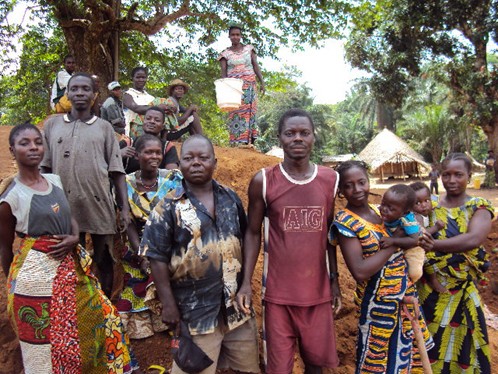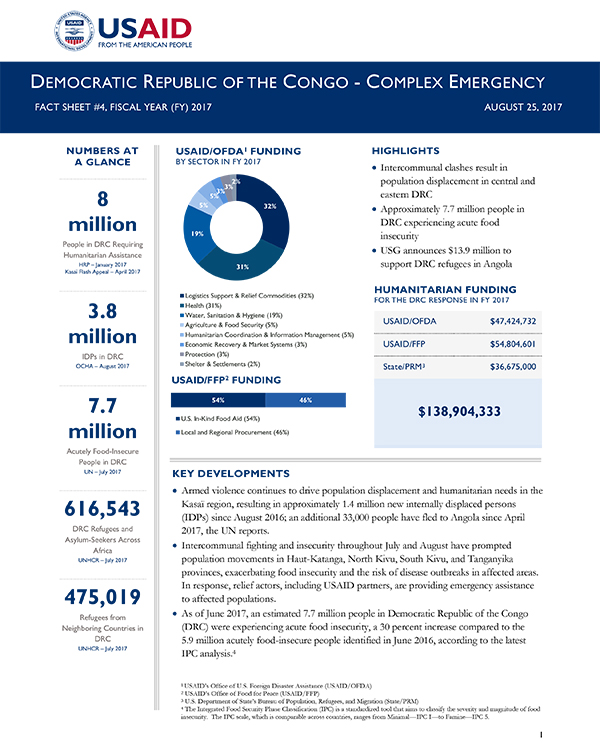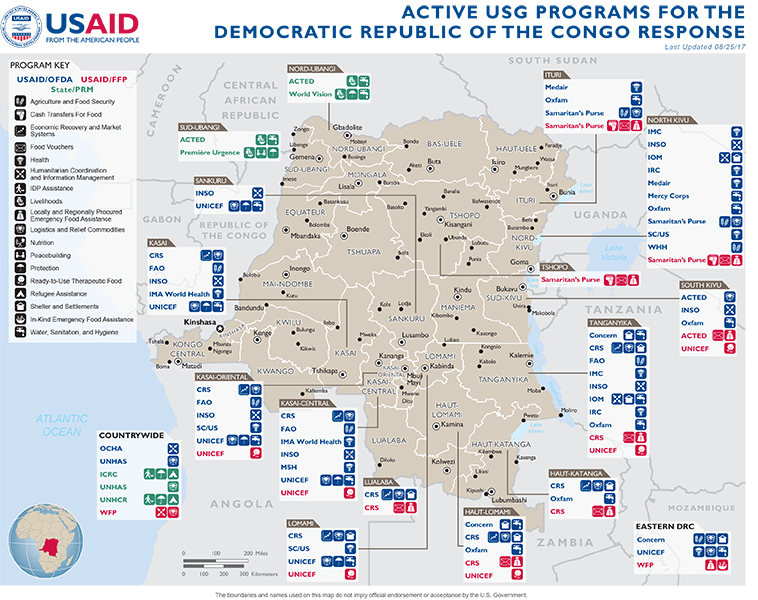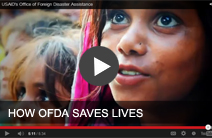- What We Do
- Agriculture and Food Security
- Democracy, Human Rights and Governance
- Economic Growth and Trade
- Education
- Ending Extreme Poverty
- Environment and Global Climate Change
- Gender Equality and Women's Empowerment
- Global Health
- Water and Sanitation
- Working in Crises and Conflict
- Disaster Assistance
- Political Transition Initiatives
- Conflict Mitigation and Prevention
- Countering Violent Extremism
- Disaster Risk Reduction
- Peacebuilding and Reconciliation
- Providing Safe & Secure Environments for Development
- Recovering From Crisis
- Resilience
- Tech Challenge for Atrocity Prevention
- World Humanitarian Day
- U.S. Global Development Lab

Latest DRC Fact Sheet
Democratic Republic of the Congo Map - 08-25-2017 ![]() (pdf - 823k)
(pdf - 823k)
view text version [pdf, 333kb]
Key Developments
Armed violence continues to drive population displacement and humanitarian needs in the Kasaï region, resulting in approximately 1.4 million new internally displaced persons since August 2016; an additional 33,000 people have fled to Angola since April 2017, the UN reports.
Intercommunal fighting and insecurity throughout July and August have prompted population movements in Haut-Katanga, North Kivu, South Kivu, and Tanganyika provinces, exacerbating food insecurity and the risk of disease outbreaks in affected areas. In response, relief actors, including USAID partners, are providing emergency assistance to affected populations.
As of June 2017, an estimated 7.7 million people in Democratic Republic of the Congo were experiencing acute food insecurity, a 30 percent increase compared to the 5.9 million acutely food-insecure people identified in June 2016, according to the latest Integrated Food Security Phase Classification analysis.
Background
Despite the implementation of a peace agreement in 2003, ongoing fighting between forces loyal to the Government of the DRC and various armed entities—including the Allied Democratic Forces, the Democratic Forces for the Liberation of Rwanda, and Mai-Mai militants—has contributed to high levels of insecurity and population displacement in eastern DRC. In addition, intensified fighting between the Armed Forces of DRC and local militia in central DRC’s Kasaï region since August 2016 has generated new humanitarian needs in the country. Humanitarian access constraints, poor infrastructure, forced recruitment into armed groups, reduced access to agricultural land and traditional markets, and violence have contributed to the deterioration of humanitarian conditions in DRC and mass internal displacement and refugee outflows since 2016.










Comment
Make a general inquiry or suggest an improvement.